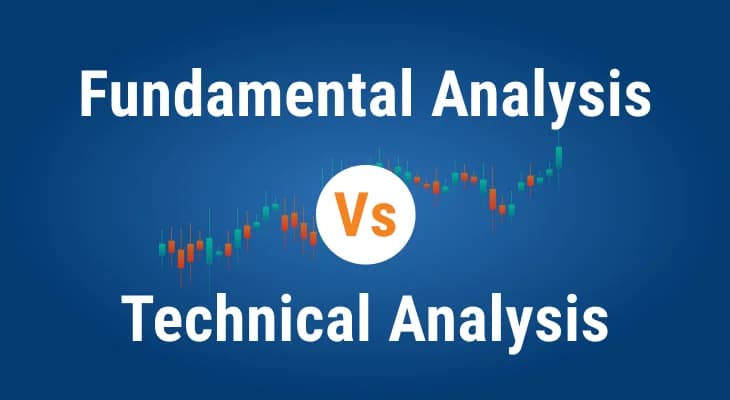
In the vast landscape of financial markets, investors are often confronted with the age-old question: fundamental analysis vs technical analysis: which is better? These two methodologies represent contrasting approaches to evaluating investment opportunities, each with its own set of principles, tools, and followers. But which one reigns supreme? Let’s unravel the debate and explore the nuances of fundamental and technical analysis to determine which approach may be better suited for investors.
Understanding Fundamental Analysis
Fundamental analysis is the bedrock of traditional investing, focusing on the intrinsic value of an asset by examining fundamental factors such as company financials, industry trends, economic indicators, and management quality. Advocates of fundamental analysis believe that a thorough understanding of these underlying fundamentals can uncover undervalued or overvalued assets, providing insights into long-term investment opportunities.
Key Components of Fundamental Analysis:
- Financial Statements: Analyzing balance sheets, income statements, and cash flow statements to assess a company’s financial health and performance.
- Economic Indicators: Evaluating macroeconomic factors such as GDP growth, inflation rates, and interest rates to gauge the overall market environment.
- Industry Analysis: Examining industry trends, competitive dynamics, and market positioning to identify growth prospects and risks.
- Qualitative Factors: Assessing management quality, corporate governance practices, and strategic initiatives to determine the potential for long-term value creation.
Exploring Technical Analysis
In contrast to fundamental analysis, technical analysis relies on historical price and volume data to forecast future price movements and identify trading opportunities. Technical analysts believe that market trends, patterns, and momentum indicators can provide valuable insights into investor sentiment and market psychology, allowing them to capitalize on short-term price fluctuations.
Key Components of Technical Analysis:
- Price Charts: Utilizing various chart patterns, such as support and resistance levels, trendlines, and chart formations, to identify potential entry and exit points.
- Technical Indicators: Using mathematical formulas and statistical tools, such as moving averages, relative strength index (RSI), and stochastic oscillator, to assess market momentum and overbought/oversold conditions.
- Volume Analysis: Analyzing trading volume patterns to confirm price trends and detect changes in market participation.
- Sentiment Analysis: Monitoring investor sentiment indicators, such as put/call ratios and sentiment surveys, to gauge market sentiment and anticipate potential shifts in sentiment.
The Great Debate: Which Is Better?
The debate between fundamental and technical analysis has raged on for decades, with proponents on both sides vehemently defending their chosen approach. However, the reality is that neither method is inherently superior, and each has its strengths and limitations depending on the investment objectives, time horizon, and risk tolerance of the investor.
Strengths of Fundamental Analysis:
- Long-Term Perspective: Fundamental analysis is well-suited for investors with a long-term investment horizon who are focused on the intrinsic value of assets and the potential for sustainable growth over time.
- Value Investing: Fundamental analysis can uncover undervalued stocks or assets with strong fundamentals, providing opportunities for value-oriented investors to capitalize on market inefficiencies.
- Risk Management: By focusing on the underlying fundamentals of companies and industries, fundamental analysis helps investors assess the intrinsic risks associated with their investments and make informed decisions accordingly.
Strengths of Technical Analysis:
- Short-Term Trading: Technical analysis is particularly useful for short-term traders and active investors who seek to capitalize on price trends and momentum in the market.
- Timing Entry and Exit Points: Technical analysis provides traders with specific entry and exit points based on price patterns and technical indicators, allowing for precise timing of trades and risk management.
- Adaptability: Technical analysis can be applied to various asset classes and markets, making it a versatile tool for traders across different financial instruments and trading environments.
Finding Harmony: Integrating Both Approaches
While the debate between fundamental and technical analysis may never be fully resolved, many investors recognize the value of integrating both approaches into their investment strategy. By combining the insights gained from fundamental analysis with the timing and risk management techniques of technical analysis, investors can achieve a more comprehensive understanding of market dynamics and make more informed investment decisions.
Ultimately, the choice between fundamental and technical analysis depends on the individual investor’s preferences, objectives, and investment philosophy. Whether you prefer the thorough analysis of fundamentals or the tactical precision of technical indicators, the key is to adopt an approach that aligns with your goals and risk tolerance, while remaining adaptable to changing market conditions. In the end, successful investing is not about choosing one method over the other but rather about finding the right balance that works for you.




